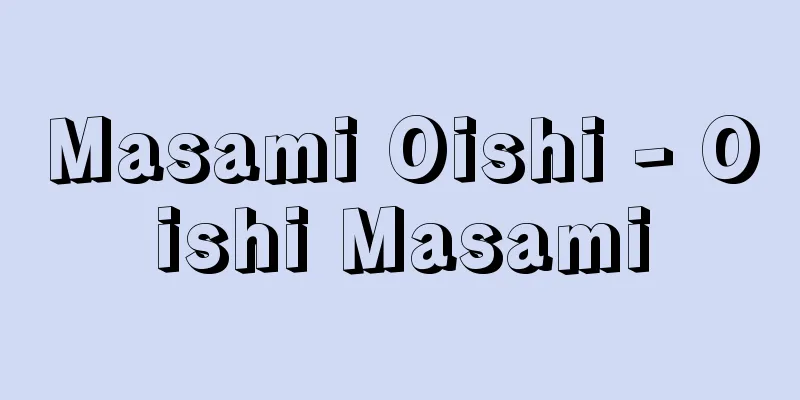Aboto - Aboto

|
…A solar calendar originating from ancient Egypt. According to ancient Egyptian tradition, a year (tirompi) consisted of 12 months (aboth) of 30 days each, plus an additional day (epagomene) of 5 days (6 days in leap years), for a total of 365 (366) days. The names of the months were roughly as shown in the table below. … *Some of the terminology explanations that mention "Aboto" are listed below. Source | Heibonsha World Encyclopedia 2nd Edition | Information |
|
…古代エジプトに起源をもつ太陽暦。古代エジプトの伝統により,1年(ティロムピ)は各30日から成る12の月(アボト)に追加日(エパゴメネ)の5日(閏年は6日)を足した365(366)日が用いられた。各月の名称はほぼ表のようであった。… ※「アボト」について言及している用語解説の一部を掲載しています。 出典|株式会社平凡社世界大百科事典 第2版について | 情報 |
<<: Apoha theory - Apoha theory
Recommend
Ain Salaf - Ain Salaf
...Several oasis routes ran through the Sahara be...
Okinawa mozuku - Okinawa mozuku
…The similar seaweed, Mozuku, has a thin body les...
Kiso District
...An old name for the forested area in the upper...
Katsuki Gyuzan
A physician and a leading figure in the Gosei sch...
A breath of fresh air
…In mountain religion, Mt. Tsurugi is likened to ...
Hairy flower wasp
A general term for insects belonging to the family...
Sending wolf - Sending wolf
...When a wild boar or deer jumps out of the moun...
Pishevari, SJ (English spelling)
...On the other hand, during the 19th century, th...
Indole-3-acetic acid
…From 1931 to 1935, F. Kögl and his colleagues at...
"Kana-mixed daughter's section"
…His other pen names include Shiba Sanjin, Sanbun...
Liver cancer
Liver cancer. There are primary liver cancers (hep...
International river - kokusai kasen (English spelling) international river
A waterway whose basin extends across multiple co...
presidentialdirective59
...This offsetting strategy, which focuses on sel...
Jinkhin (English spelling)
1243‐85 The second son of Kublai Khan, the founder...
Mogami Tokunai - Mogami Tokunai
An explorer of Ezo in the late Edo period. His na...






![Kounu [town] - Kounu](/upload/images/67cb8b353311a.webp)

![East [village] - Azuma](/upload/images/67cad45433cfc.webp)
